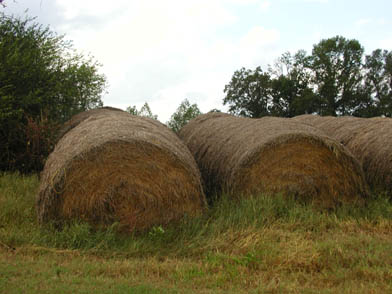Hay is going to be more valuable than ever this year in light of the drought. For this reason, it is critical to maximize usable hay. Round bales are a popular means to harvest hay in many parts of the country. Proper round bale storage can make or break you. If your current storage method is allowing several inches of bale to rot, you might be surprised at how much hay is being wasted. The outer 4 to 6 inches, where most losses occur, make up a large percentage of the bale as shown in Table 1.
What is an organic trace mineral?
Nutritionists, along with producers, are always on the lookout for the next big thing to really improve livestock performance. In the case of nutritionists, we’re looking for products that pack a bigger nutritional punch per pound. Organic trace minerals are one of those advances that do bring a little more to the table. But what is an organic trace mineral?
Why is vitamin D added to mineral mixes and feeds
Vitamin D is often known as the “sunshine vitamin” because it is synthesized in response to exposure to sunlight. There are two major natural sources of vitamin D, cholecalciferol (vitamin D3) and ergocalciferol (vitamin D2). Vitamin D3 is synthesized in the skin of many herbivores and omnivores upon exposure to UV light from sunlight. Vitamin D2 is not found in green forages, but is formed when the dying leaves are exposed to sunlight. Thus, sun cured hay is a good dietary source of vitamin D2. Livestock utilize vitamin D3 much more efficiently than vitamin D2.
After a drought: Parasites abound!
Congratulations! You made it through one of the worst droughts on record. Now that the rains have come and the grass is green again, your worries are over, right? Wrong! Now your livestock are picking up all of the parasites that lay dormant all of those months of drought. Are you ready?
Keep your ewes and does in shape for lambing and kidding
Winter isn’t just for calving. Sheep and goat producers are gearing up for lambing/kidding season, too.
The last month of gestation is a key time in gestational development. Fetuses are rapidly growing and the body is mobilizing nutrients for milk production. Space in the rumen becomes a limiting factor. The rapidly growing lambs or kids push the uterus into the space normally occupied by the rumen, leaving less and less space for feed. Consequently, the dam may not have enough room in the rumen to get all her energy needs fulfilled (especially on an all-forage diet).
Supplement cost and supplement value: There’s a difference
While it’s true that Agriculture is enjoying some record or near record dollar receipts for commodity goods, input costs are rising and thus need to be managed. Everything costs more these days. From fuel to food, no one can escape all the rising costs.In this economy, we should all be challenged to find what the best buy is for the dollar and match purchases to our needs, goals and objectives.
Control weeds with grazing
Everyone I know hates weeds. I’ve spend countless hours with my grandmother pulling dandelions and crab grass, her most hated enemies. Pastures are no different. Cattle producers want to look over their pasture and see a sea of lush, green grasses and legumes. So what happens when the scene is darkened with brush and broadleaf weeds? Wouldn’t it be great if there was a way to utilize the weeds to maximize the available forage?

